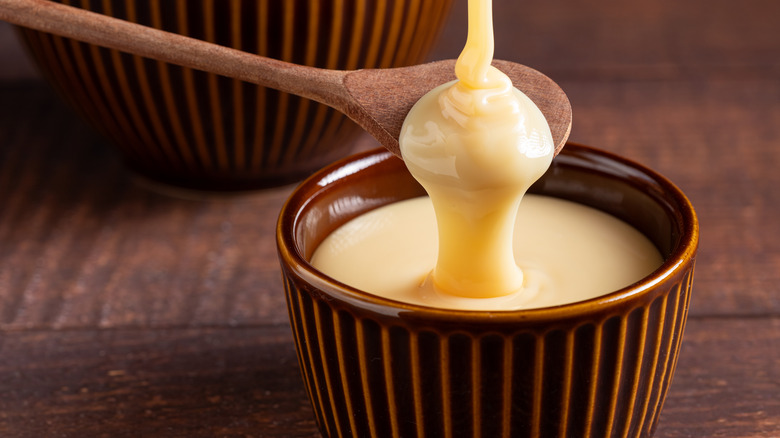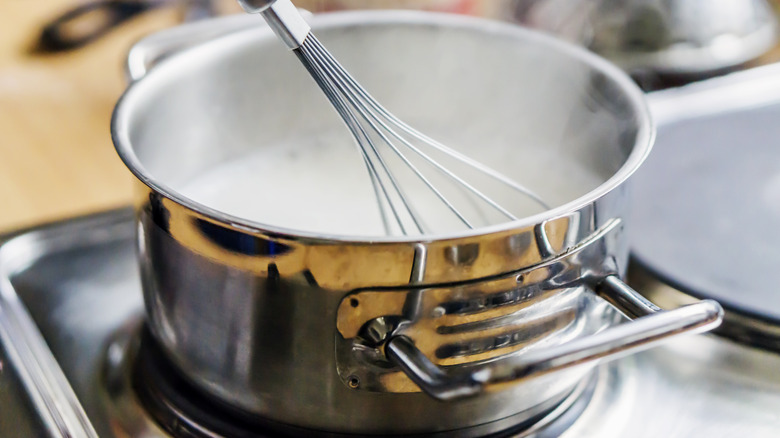The Simple Way To Swap Evaporated Milk With The Regular Variety
There's one straightforward difference between evaporated milk and the carton of two-percent milk that you pour into your cereal: Evaporated milk has been reduced over heat, while regular milk has not. That's why evaporated milk, sticky and thick, is such a perfect addition to countless baking recipes. It adds a velvety touch to the classic Mexican tres leches cake, creates a smooth filling for pumpkin pie, and works wonders for a creamy, slow-cooker soup.
While you can find canned, evaporated milk at most grocery stores, it's also possible to whip it up at home when you're short-handed. Simply pour fresh milk into a saucepan and simmer it over low heat until it reduces. The goal is to reduce the runny liquid by about 60%. In other words, start with a 60% larger quantity than you'll need for the final recipe and reduce the mixture until it reaches your desired measurement and thickness.
Heat slowly and experiment with plant-based options
A couple of pro-tips when it comes to cooking milk: Heat the mixture slowly and gently, keeping a watchful eye over your saucepan. When cooking milk, it's best to avoid high heat, which can lead to burnt or curdled milk. If you're stepping into the world of vegan baking, you can also try reducing oat, almond, soy, or cashew milk over heat for a plant-based evaporated milk. Just make sure you've sufficiently reduced and thickened your plant-based substitute, as some vegan milk can run thinner than the dairy version.
Once you've let the mixture cool down, you should have a slick, almost syrupy evaporated milk. Use your new homemade ingredient to thicken your next batch of chicken and dumplings, or stir it into a cinnamon-infused rice pudding. And if you're looking for a sweeter alternative, dissolve sugar into your fresh milk before reducing it over heat. The result? Sweetened condensed milk — the sugary cousin of evaporated milk — ready to be mixed into puddings or Vietnamese iced coffee.

